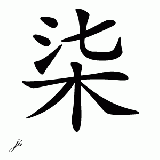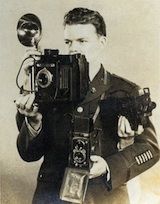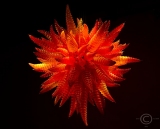- Forum
- General Discussion | Introductions | Off Topic Forum
- Photography General Discussion
- Depth of Field Calculator-
Depth of Field Calculator-
-
 Topic Author
Topic Author
- Silver Fox
- Photography Hooked
-
- Nikon D810, D300 and Sony a7R III
- Followers: 132
- Posts: 738
-
Points:
4606
Post #70537
www.dofmaster.com/dofjs.html
-

- Baydream
- Moderator
-
- Canoni/60D/70D/5DmkIII
- Followers: 388
- Posts: 11185
-
Points:
7278
Post #70619
Shoot, learn and share. It will make you a better photographer.
fineartamerica.com/profiles/john-g-schickler.html?tab=artwork
-

- neal1977
- Snapobsessed
-
- D810 and D90
- Followers: 110
- Posts: 486
-
Points:
3187
-

- MLKstudios
- Banned
-
- D800 ;-)
- Followers: 72
- Posts: 4480
-
Points:
2
Post #71083
If you have to pull out a calculator before you take a shot, you probably missed it.
Matthew
BTW while it may give you a "ballpark" figure, they are calculated for an 8x10 print. Any other print size, it has no real meaning.
Matthew L Kees
MLK Studios Photography School
www.MLKstudios.com
[email protected]
"Every artist, was once an amateur"
-

- John Landolfi
- Super User
-
- Nikon D3S, D7100, Sony RX10, Canon G11, F4s, F2sb, RetinaflexIV etc, etc
- Followers: 1205
- Posts: 21605
-
Points:
40394
Post #71295
MLKstudios wrote: I don't recommend them to my students. You need a "feel" for DOF with all your lenses at different distances and aperture settings. Even a landscape photographer knows to stop down the lens (and use a tripod) to get the DOF he needs. And most portrait photographers like a shallow DOF, so use a larger ap.
If you have to pull out a calculator before you take a shot, you probably missed it.
Matthew
BTW while it may give you a "ballpark" figure, they are calculated for an 8x10 print. Any other print size, it has no real meaning.
I bet this BTW may be puzzling to some. Perhaps you can expand a bit??
-

- Henry Peach
- Apprentice
-
- I currently use a 5DII or Sony Nex-3 most of the time.
- Followers: 50
- Posts: 2925
-
Points:
16
Post #71473
As long as it requires an extra device, and requires me to input the settings I probably wouldn't use a DOF calculator like the one above before a shot when working. I have used the one linked above when just contemplating shots sitting at home. I installed CHDK (<-makes my compact digital almost tolerable to use, IMO) on my Powershot, and it has a built in DOF calculator that works like a scale. It inputs the settings as the camera is operated and it displays DOF info on the LCD. I love it!
Of course all DOF calculators and scales must be tested to see how they stack up to an individual photographer's opinion of what is sharply in focus or not, but this has always been an issue. Early advice I heard was to consider the DOF scale exaggerated by an f/stop until personal testing showed otherwise.
-

- MLKstudios
- Banned
-
- D800 ;-)
- Followers: 72
- Posts: 4480
-
Points:
2
Post #71639
If your lens doesn't have a scale (not all do) then your camera may have a DOF preview button, that stops the lens down to the chosen aperture and lets you SEE the DOF on the viewfinder screen. They work well in bright light, but so not so well in low light with a small chosen ap -- it simply gets too dark to see.
As for a better explanation of what I said above. DOF has three factors. In order they are distance, focal length and lastly the chosen ap. If you use a 50mm, then you only have two factors -- distance and aperture as the focal length is a constant. In my course (week 1) I have my students use reciprocity and f/4, f/8 and f/16 so they get a feel for how much DOF those apertures make.
It takes some experience, but as long as you are aware of what affects the DOF, you can get to where you have a sense of how much "apparent" focus to expect at different distances and settings, without a "calculator".
Matthew
To add, the DOF calculators were calculated long ago for acceptable resolution (lines per inch) for an 8x10 enlargement. If you print larger than that, you need more DOF to look as sharp, and smaller, you can use a larger ap.
Matthew L Kees
MLK Studios Photography School
www.MLKstudios.com
[email protected]
"Every artist, was once an amateur"
-

- Henry Peach
- Apprentice
-
- I currently use a 5DII or Sony Nex-3 most of the time.
- Followers: 50
- Posts: 2925
-
Points:
16
Post #71719
MLKstudios wrote: While more common years ago with MF lenses, there are still DOF scales on some lenses.
They are there, but the scale is so small it's almost useless. On my Canon primes the only marks are for f/22, and those are just a few millimeters apart. I don't need to know the DOF for f/22. I want to know it for f/5.6.
EDIT (way later): I'm comparing a modern Canon 50mm f/1.4 to an assortment (Nikon, Pentax, Olympus, Canon FD...) of older, manual focus 50mm lenses. They've got nice, big DOF scales. For instance on the Pentax (K) 50mm f/2, which would have been a pretty cheap lens in it's day, the area between the f/4 marks on the DOF scale is similar to the area between the f/22 marks on the EOS lens. Maybe it has something to do with the design requirements for AF. I still think it would be an easy feature to include in the operating software.
-

- MLKstudios
- Banned
-
- D800 ;-)
- Followers: 72
- Posts: 4480
-
Points:
2
Post #71775
A telephoto lens is going to have both 22's close together since focal length is factor #2 and long lenses have less DOF than short lenses. On a wide lens, the 22's are going to be far apart, since you get much more DOF at the same aperture (f/stop).
There is also something called "hyperfocal" distance, once used by landscape photographers, where you put the right number on infinity. You now have the maximum DOF possible for that lens (at that ap).
But again, that's based on an 8x10 print. Like Henry (Matt) noted above, stop down one more full stop to get what you need to look truly sharp.
Matthew
Matthew L Kees
MLK Studios Photography School
www.MLKstudios.com
[email protected]
"Every artist, was once an amateur"
-

- Foxy Girl
- Photography Hooked
-
- Nikon D810 and Nikon D80
- Followers: 184
- Posts: 818
-
Points:
2789
- Forum
- General Discussion | Introductions | Off Topic Forum
- Photography General Discussion
- Depth of Field Calculator-
Latest Reviews
The Canon EOS R100 is an entry-level mirrorless camera introduced in 2023. But just because it’s an entry-level camera doesn’t mean it’s a bare-bones camera. Find out why in this review!
Nikon’s retro-looking Nikon Zfc is anything but retro. Under its classic body is a host of features and amenities that make it a worthwhile compact mirrorless camera for 2024.
The Canon EOS R50 is one of the newest R-system cameras from Canon. Is it worth your money? Find out all the details you need to know in this comprehensive review.
The Sony FE 70-200mm f/2.8 GM OSS II is Sony’s flagship mirrorless zoom lens. As such, it’s loaded with features and has a top-shelf build quality that makes it a top pick!
Latest Articles
Using leading lines in photography helps improve the composition by drawing viewers in and leading their eye from the foreground to the background. Explore some fine examples of this in this guide!
The Insta360 has one of the best lineups of action cams and 360-degree cameras. With these Insta360 accessories, you can elevate your photography and videography game!
Creating impactful photos of landscapes depends on many factors, not the least of which is your talent behind the lens. This guide explores other elements required for the best product.
The Canon EOS R100 is an entry-level mirrorless camera introduced in 2023. But just because it’s an entry-level camera doesn’t mean it’s a bare-bones camera. Find out why in this review!
Are you ready to upgrade your camera? Before buying new, you might consider the value of purchasing used gear to save money.
The Olympus OM-D E-M10 Mark IV is a micro four thirds camera released in 2020. It’s an entry-level system along with the OM-D E-M5 Mark III. Use this guide to determine which one is best for you!
Blue hour photography might not be as well known as golden hour photography, but it is every bit as good a time to create epic images of landscapes. Learn how in this quick tutorial!
Nikon’s retro-looking Nikon Zfc is anything but retro. Under its classic body is a host of features and amenities that make it a worthwhile compact mirrorless camera for 2024.















